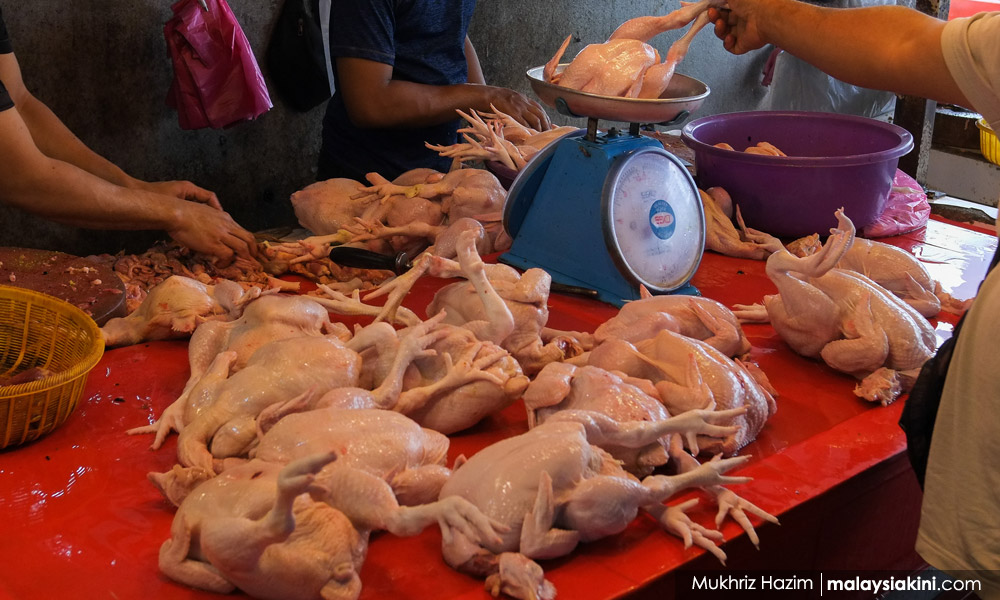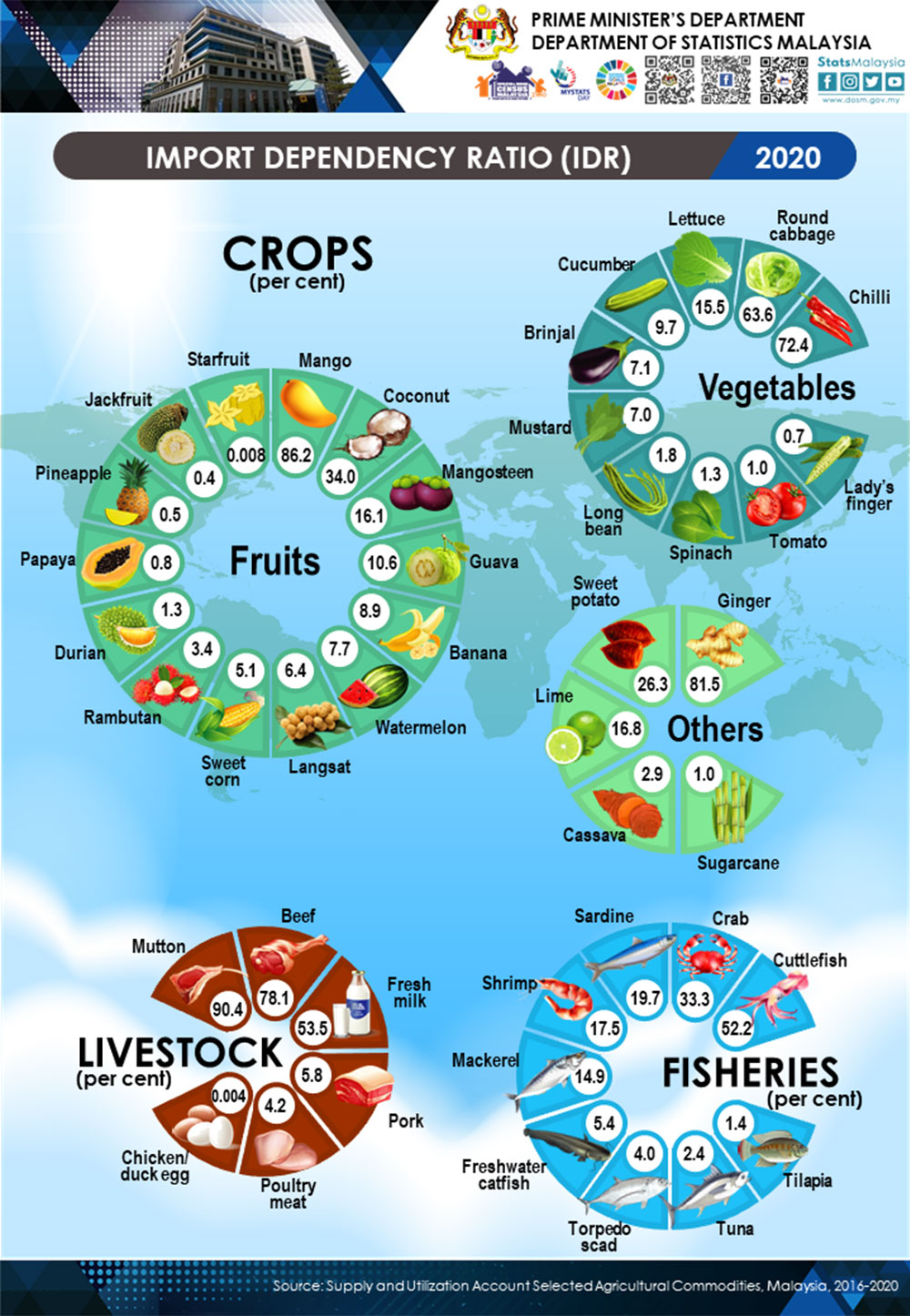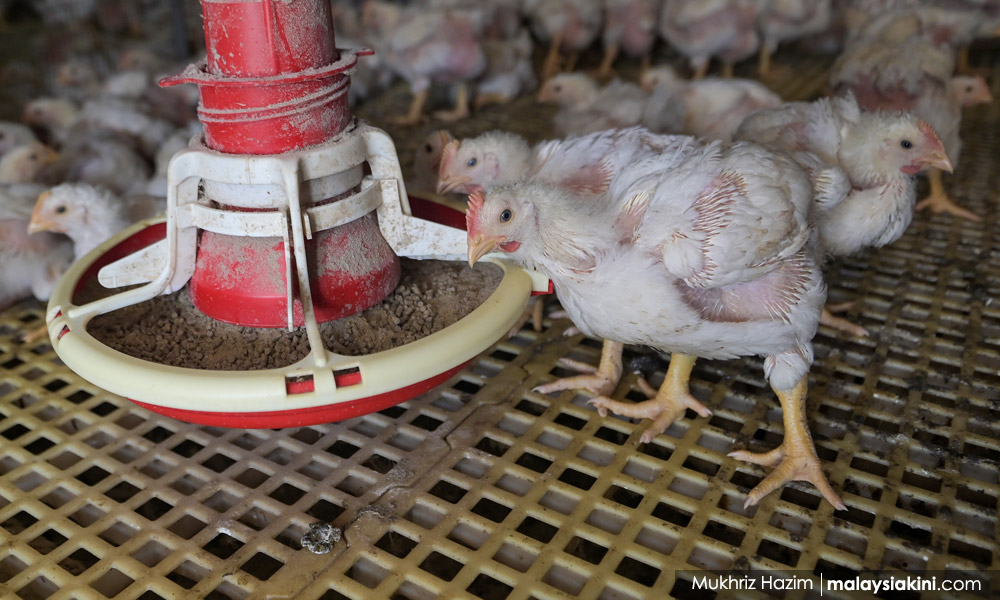KINIGUIDE | For several weeks, the prices of chicken started going up. And then, over the weekend, the produce started disappearing off shelves and wet markets.
Malaysiakini looks into why and the larger issue of food security in Malaysia.
What is food security?
Food security largely refers to the ability of a country to ensure an affordable supply of food for its citizens.
It is measured by the import dependency and self-sufficiency ratios, which measure how much selected agricultural commodities are imported.
Poultry meat and chicken and duck eggs are particularly important food products as they are the most consumed animal product in Malaysia and are a key source of protein.
Malaysians consumed 47.4 kilogrammes of poultry meat and 20.7 kilogrammes of chicken and duck eggs per person in 2020, compared to other meat like beef (5.7 kilogrammes per person), mutton (1.3 kilogrammes) and pork (17.5 kilogrammes).

How much food does Malaysia import?
According to the Department of Statistics Malaysia, Malaysia is growing more dependent on imported food products and is running a trade deficit in the area.
The import dependency ratio rose to 13.7 percent in 2015, up from 7.4 percent in 1987.
In 2020, among food items for which Malaysia is reliant on import are mangoes (86.2 percent imported), round cabbage (63.6 percent), cuttlefish (52.5 percent), mutton (90.4 percent), beef (78.1 percent) and fresh milk (53.5 percent).
However, Malaysia is considered self-sufficient in poultry meat, producing some 98.2 percent of its domestic needs.

Then why couldn’t I find chicken in the markets these past few days?
Even though Malaysia produces enough poultry meat for its local needs, the poultry farming industry is highly reliant on imported chicken feed.
Almost all of the grain needed to make chicken feed is imported from the Americas in US dollars and is vulnerable to currency fluctuations.
Malaysia imports approximately 80 percent of its grain corn from Brazil and Argentina, while 96 percent of soybean comes from Argentina.
The Federation of Livestock Farmers’ Associations of Malaysia (FLFAM) said supply was disrupted due to adverse weather conditions in supplier countries, which the governments there attributed to climate change.
This drove prices of grain up, making it costly for poultry farmers, who were already suffering from the weakening ringgit.
The Agriculture and Food Industries ministry estimates grain corn prices have gone up from RM500 per tonne to RM1,900 per tonne in some instances.
The Domestic Trade and Consumer Affairs Ministry said the sharp increase in the cost of corn and soybean feed resulted in a 70 percent hike in poultry farming costs.

But why can’t I get chicken at all, even at a higher price?
The government controls prices for key food items and has set a ceiling price for chicken.
To ensure this, it provides a subsidy for chicken feed to farmers, at a tune of 60 sen per kilogramme.
However, some farmers complained that there had been delays in the disbursement, so the chickens were not getting the same amount and quality of feed intake.
The weakening ringgit also means that the subsidy may not be enough.
This means the chicks are growing slower, so poultry producers cannot supply at the same rate.
It has also prompted some chicken factories to shut down temporarily while waiting for the chicken to grow to the size needed.
It was reported that in Jasin, a factory closed temporarily to wait for the chicken to grow from 1.1 kilogrammes each to 1.8 kilogrammes, as demanded by the market.
Is chicken feed import the only reason for poor chicken growth?
No, FLFAM also said that the current heatwave had hampered chicken growth.
“The situation makes the chickens eat less, have no appetite, get tired quickly and drink a lot of water,” FLFAM advisor Jeffrey Ng said.
The current hot weather is expected to last until September, the Meteorological Department said, although extreme heat is expected to abate by the end of this month.
Utusan Malaysia also reported that several major poultry industry players had shut down supply to protest delays in subsidy disbursement, but the government denied this was the cause of the shortage.

What is the government doing about this?
The government said it is expediting subsidies to approved poultry farmers in hopes that it will address the current shortage.
In the longer term, Agriculture and Food Industries Minister Ronald Kiandee said the government is formulating a policy to reduce dependence on animal feed imports by promoting grain corn farming.
Last month, the ministry announced that 80,000 hectares nationwide will be used to plant grain corn by the year 2023, and it encouraged private large scale farming of this crop.
It is unclear if this is linked to the Grain Corn Development Masterplan (2018-2032), launched by the government in 2016, with the aim of producing 30 percent of grain corn required for domestic consumption.
Is this a new issue?
Not at all.
The Malaysian government had grappled with the grain corn production issue since the 1980s when it was identified as a key vulnerability to the nation’s food security.
From 1989 to 1992, a commercial trial was conducted, but the yield was low compared to other crops like oil palm and thus deemed unsustainable. The project was terminated in 1996.
What makes the government think we can succeed in producing grain corn now if it failed in the 1990s?
In the past years, the ministry has evaluated grain corn industries in neighbouring Thailand, the Philippines and Indonesia and believes it can succeed this time by following these countries’ lead, a Malaysian Agricultural Research and Development Institute paper reads.
Indonesia will produce 12 million metric tonnes of grain corn in 2020, followed by the Philippines (8.0 million metric tonnes), Thailand (5.5 million metric tonnes) and Vietnam (4.54 million metric tonnes).
In contrast, Malaysia produces 80,000 metric tonnes of corn, much of which is sweet corn not used for animal feed.

Under the 2016 Masterplan, the ministry aims to open 30,000 hectares of land for grain corn farming in low humidity flatlands like in Chuping, Seberang Perai and Bachok, estimated to result in the production of 1.4 million metric tonnes of grain corn.
A pilot project commenced in 2020 while Mardi has been collaborating with the Indonesian Cereals Research Institute to share technology and hybrid seeds since 2018.
Mardi researchers said Indonesia’s grain production grew after it replicated and adapted what was done in the United States, so Malaysia is learning from Indonesia and adapting these practices locally.
“It is not too late to revitalise the corn industry and become one of the grain corn players in the world,” they said.




No comments:
Post a Comment
Note: Only a member of this blog may post a comment.